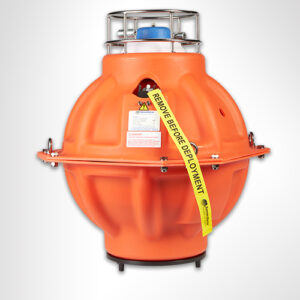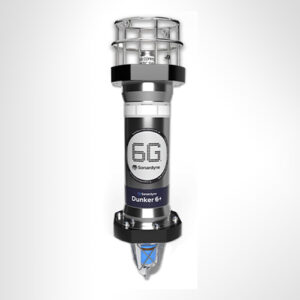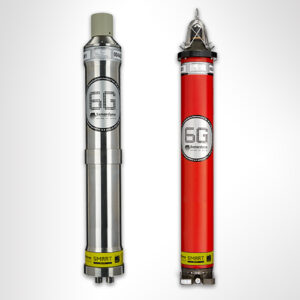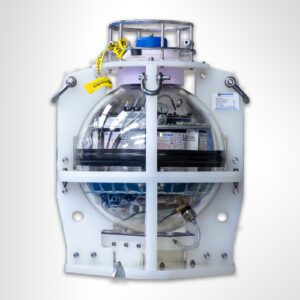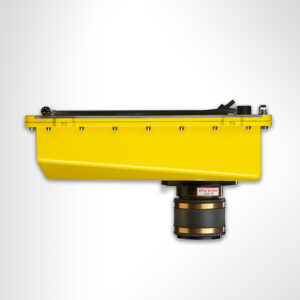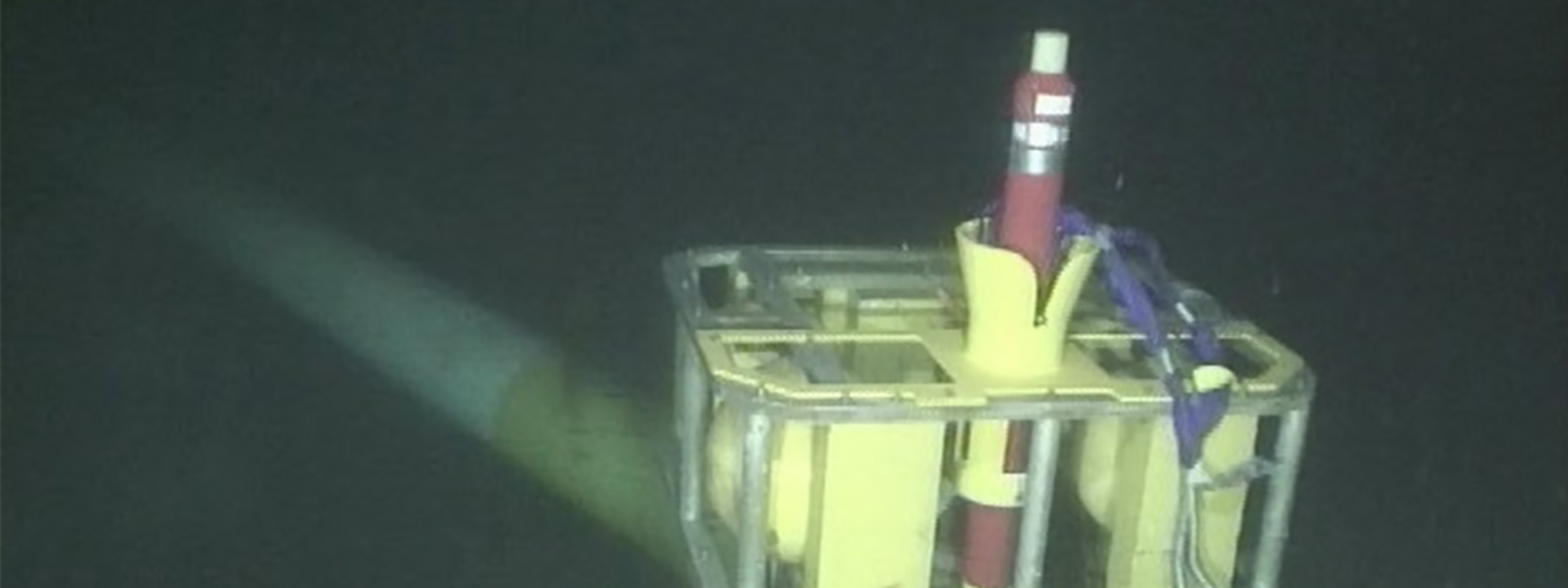
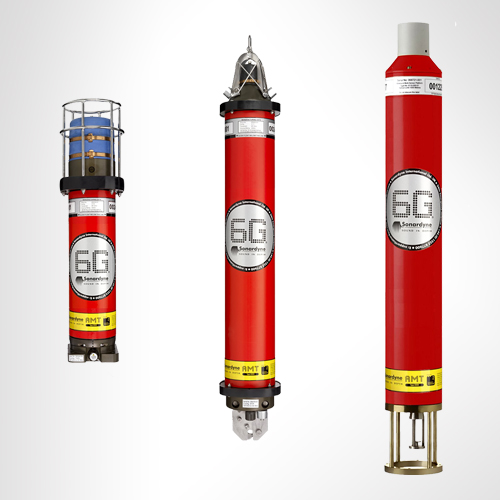
Whether you are looking to monitor a moving subsea structure or an underwater landslide, look no further. AMTs combine accurate range and pressure measurements, onboard data logging, long deployment life and wireless seafloor-to-surface communications. Data can be even be collected in real time using a USV to harvest and deliver your information.
At a glance
Recommended for long endurance site surveys
Leave it deployed for six years or more
Extensive choice of monitoring sensors
Depth rated to 3,000 m
Harvest data using a ship, buoy, AUV or USV
Remote and precise subsea monitoring
Want to find out more?
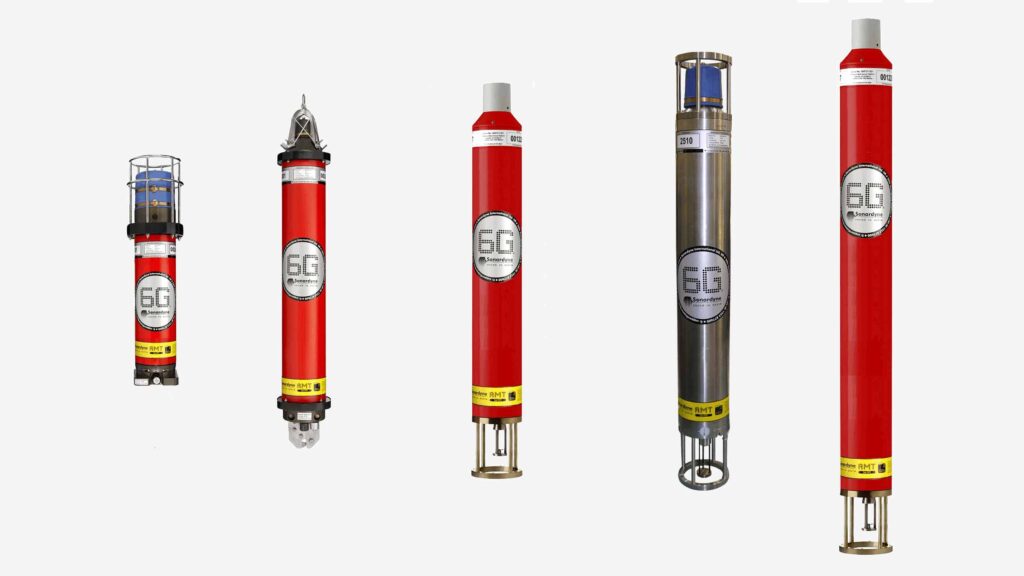
There's a model of AMT to suit any deployment scenario
Options include units with an acoustic release built in for easy recovery (left)
Housing options include Super Duplex stainless steel (left)
AMTs in maxi housings have batteries which last many years without servicing
Benefits of AMT for your operations
Surveillance
It can detect subtle movement often not picked up by traditional ROV surveys so ideal for monitoring slow movements, like creeping or buckling pipelines.
Repeatable
Using structure and seafloor transponder buckets, AMTs can be ROV-deployed, removed and re-installed to provide insight over time.
Configurable
AMTs can be configured to make measurements at specific intervals and these can be adjusted on-demand by you as your campaign progresses.
Overview
Autonomous Monitoring Transponder (AMT) is a long-endurance transponder that is extensively used for subsea survey tasks and is capable of autonomously acquiring acoustic ranges and sensor data without surface control.
The data is time-stamped and logged internally for recovery via the integrated high-speed acoustic telemetry modem. This autonomy allows measurements to be made over a long period of time without requiring a surface vessel or ROV to command the process. This enables new applications that save vessel and survey time so reducing cost and risk.
Precision pressure, temp, sound velocity and dual-axis inclinometer sensors are integrated and are intelligently powered up at the requested time and sampling period, providing an ultra-low power platform for up to three years deployment. Sampling regimes can be re-programmed and recovery of all data can be achieved via the acoustic telemetry link.
AMT has many of the same acoustic functions as Compatt 6, our most popular navigation transponder. It operates in the Medium Frequency (MF) band and is fully Sonardyne Wideband 2 compatible.
The instrument is available with a range of omni and directional transducers, depth ratings and pressure housings dependent on deployment duration and application. Additional external sensors can be easily integrated via the power and communications port.
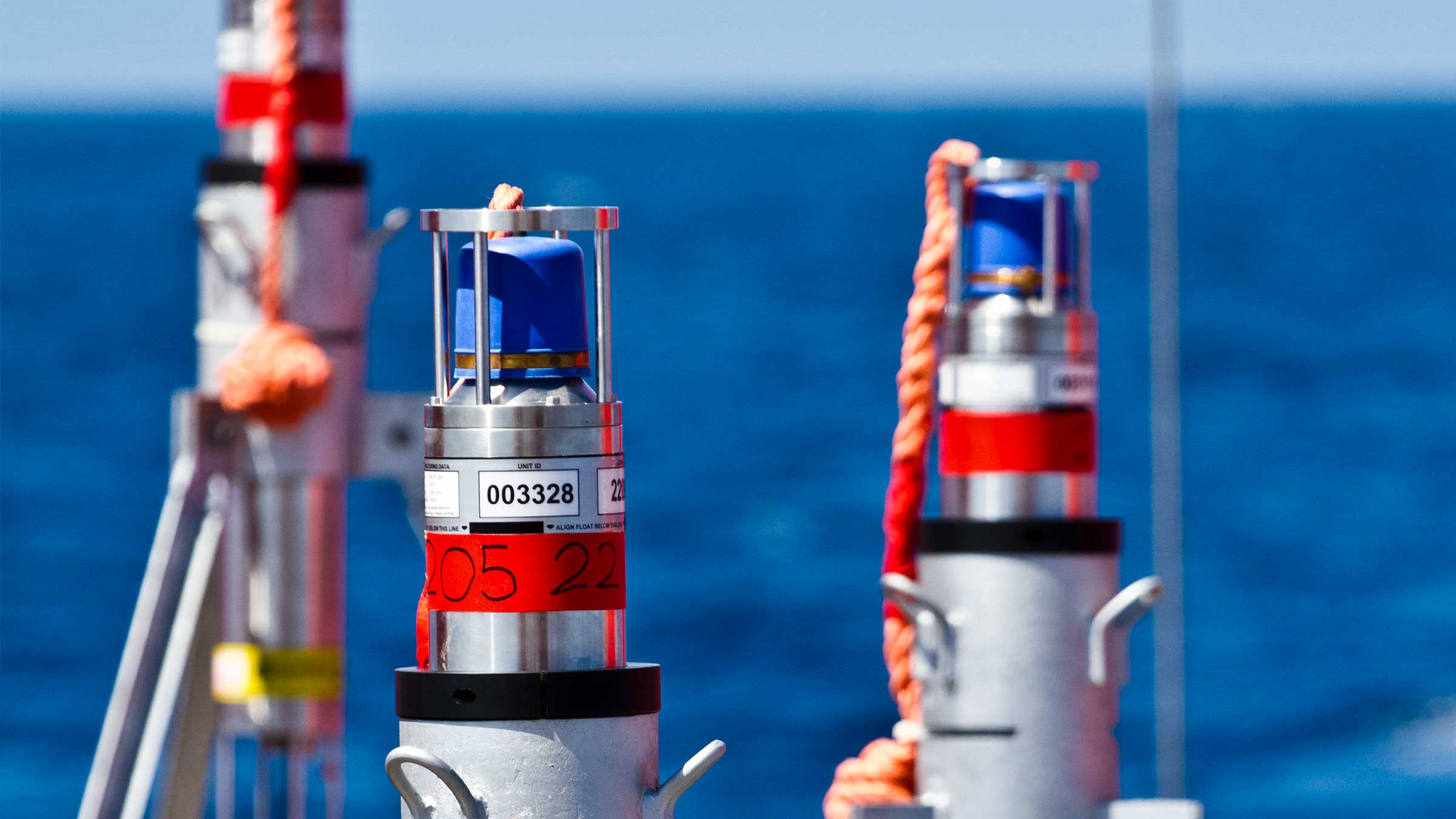
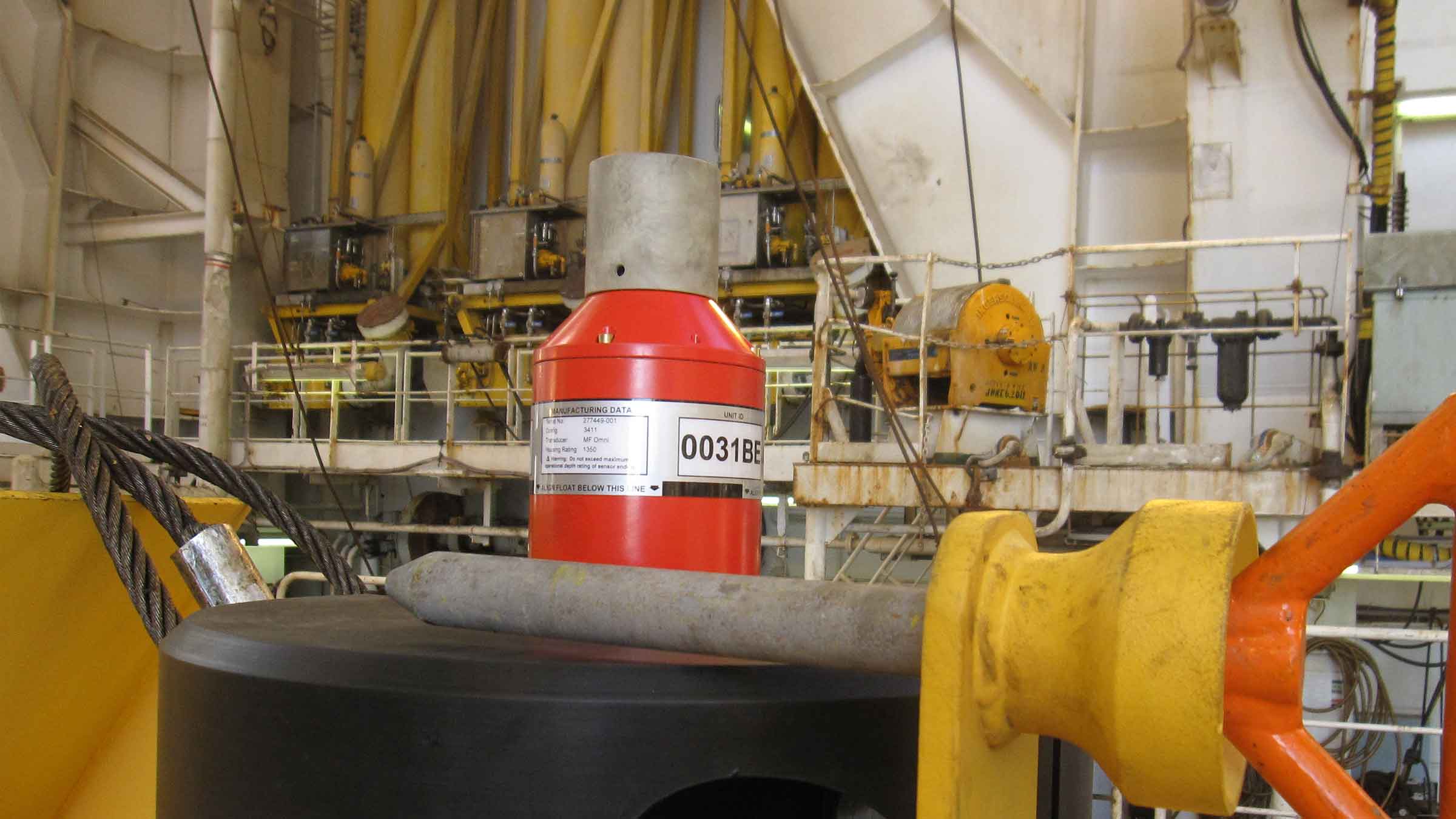
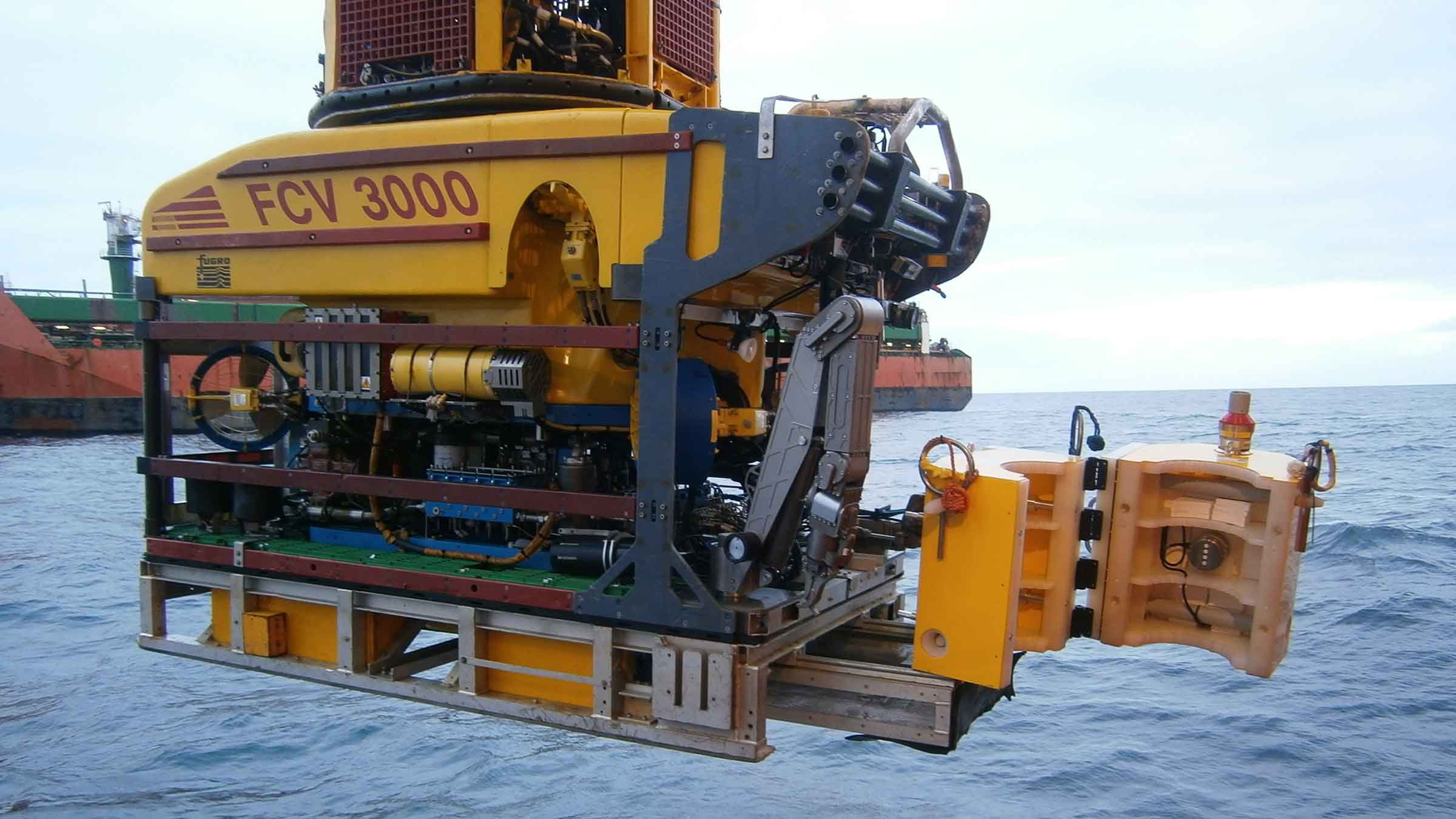
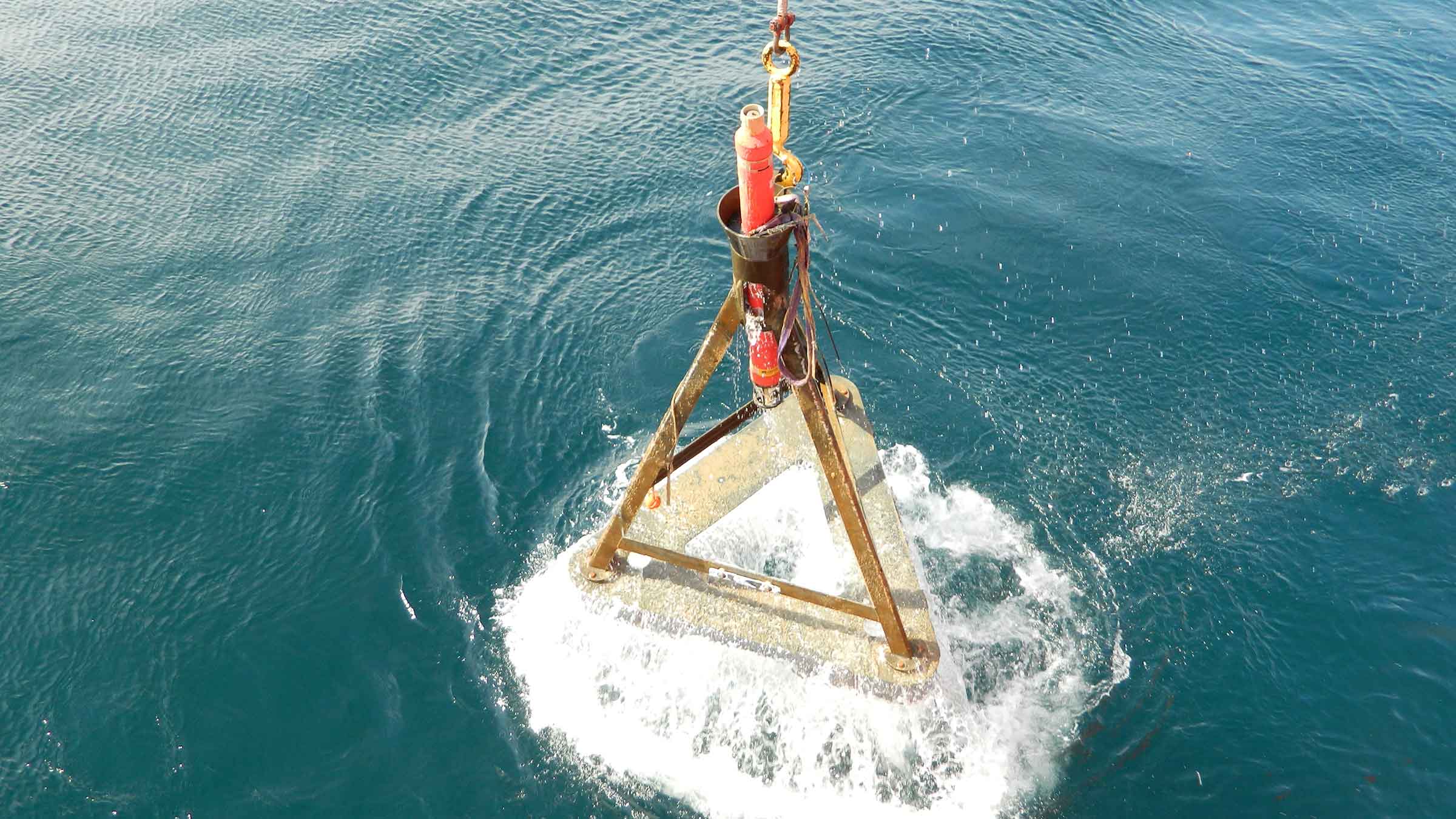
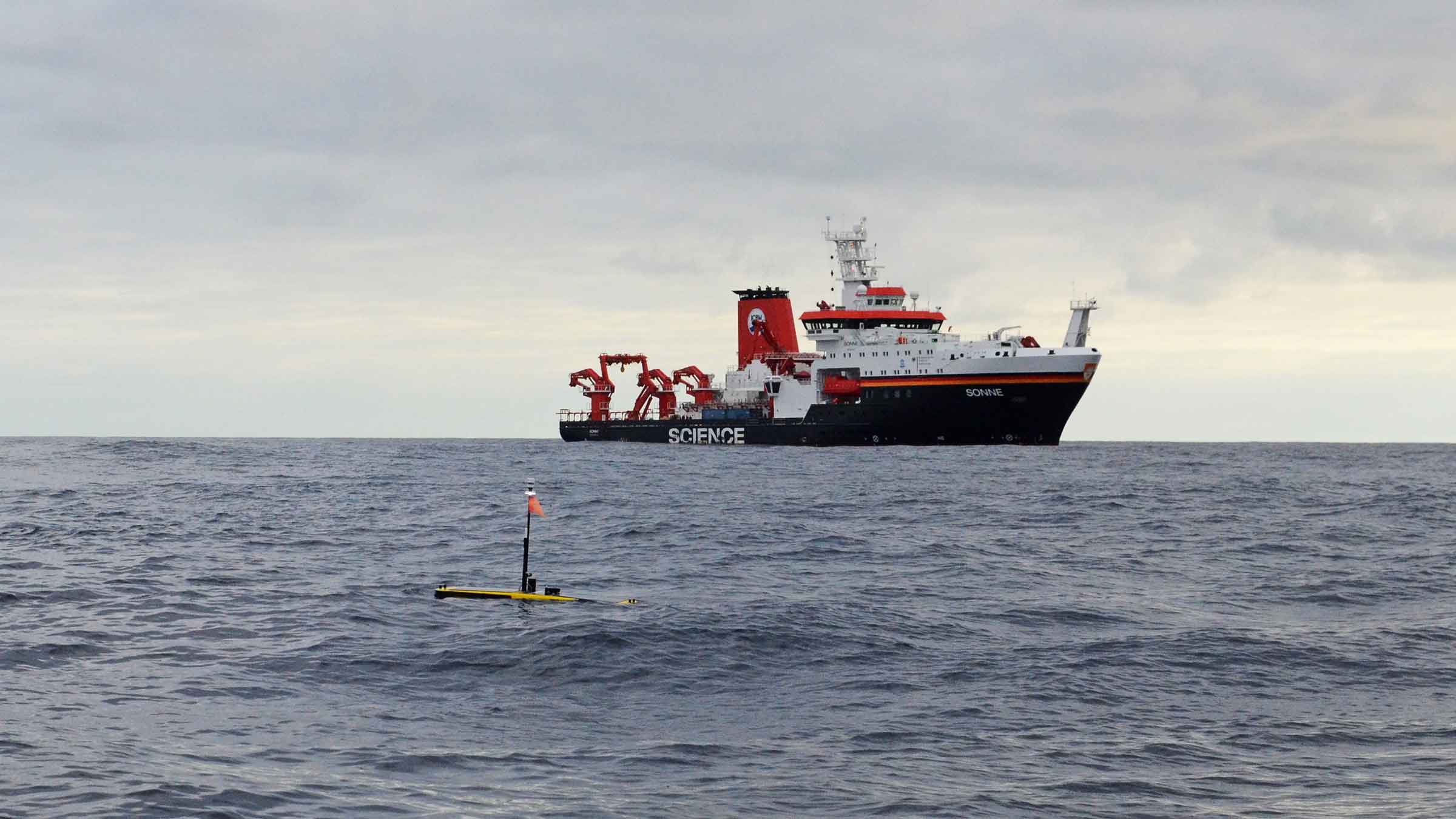
Why invest
Acoustics
-
Sonardyne Wideband 2 MF band (18 - 36 kHz)
-
Over 500 unique addresses, ideal for large array deployments
-
Data transfer rates of 100 to 9,000 bps - user selectable
-
Omni-directional and directional transducers to suit environmental conditions
-
Ranging precision: Better than 15mm
Design
-
3,000 m depth rating
-
Aluminium or Aluminium-bronze housing depending on environmental conditions and duration of deployment
-
Can be deployed for over 5 years without recovery (maxi housing)
-
ROV-friendly design; integrated acoustic release mechanism as standard
Sensing
-
Standard onboard: Temperature, tilt, strain gauge
-
Optional onboard: High precision stain gauge, DigiQuartz pressure sensor, high accuracy inclinometer, sound velocity
-
Sampling rate: User configurable
-
Vessel, USV or AUV data harvesting options
-
Optional external: Current meters, turbidity sensors...
Ownership
-
A typical system; multiple seafloor and structure mounted AMTs (typically 6), vessel-based Modem 6 or Dunker 6 or HPT 5000 / 7000, SIU, Monitor software
-
Warranty: 1 year return to Sonardyne service centre
-
ITAR Controlled: No
-
UK Export License: Not required
AMT case studies
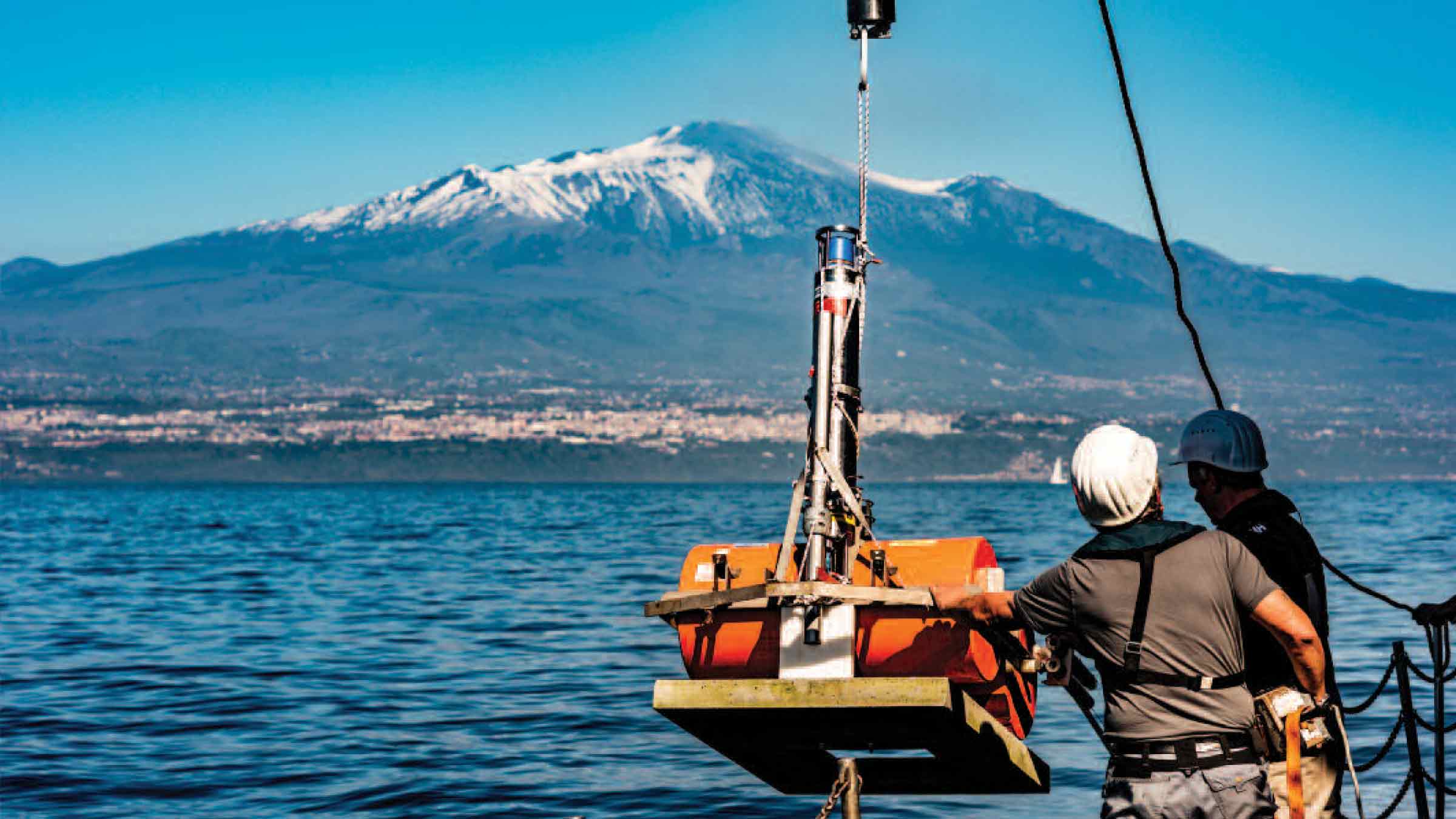
Ocean Science
Measuring Mount Etna – an underwater monitoring first
A network of our instruments deployed by scientists from GEOMAR Helmholtz for 15 months has measured underwater slippage of the southeast flank of Europe’s most active volcano, Mount Etna, for the first time. Read more here.
Client: GEOMAR Helmholtz Centre for Ocean Research
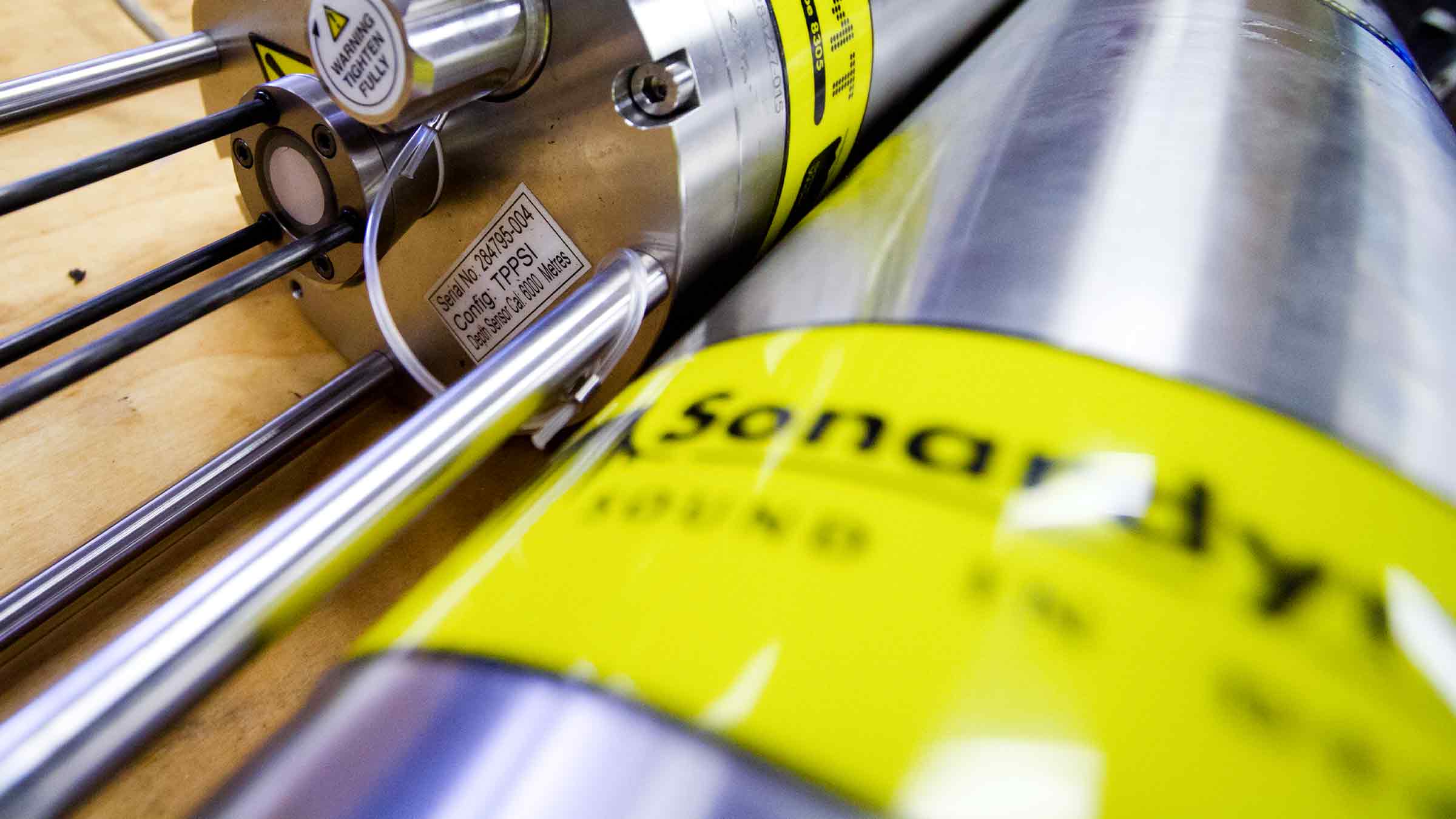
Ocean Science
Long endurance monitoring of tectonic motion
On land, GPS and laser observations enable precise geodetic measurements. Until recently, the inability to undertake cost-effective complementary subsea has not been possible. Read how GEOMAR Helmholtz have been using our monitoring technology to measuring tectonic plate movements.
Client: GEOMAR Helmholtz Centre for Ocean Research
Resources
| Feature | Type 8305-3411 | Type 8305-3111 | Type 8305-3113 |
|---|---|---|---|
| Depth Rating | 3,000 m | 3,000 m | 3,000 m |
| Operating Frequency | MF (20–34 kHz) | MF (20–34 kHz) | MF (20–34 kHz) |
| Transducer Beamshape | Omni-directional | Omni-Directional | Directional |
| Transmit Source Level (dB re 1 µPa @ 1 m) | 187–196 dB (4 Levels) | 187–196 dB (4 Levels) | 190–202 dB (4 Levels) |
| Tone Equivalent Energy (TEE)* | 193–202 dB | 193–202 dB | 196–208 dB |
| Receive Sensitivity (dB re 1 µPa) | 90–120 dB (7 levels) | 90–120 dB (7 levels) | 80–120 dB (7 levels) |
| Ranging Precision | Better than 15 mm | Better than 15 mm | Better than 15 mm |
| Number of Unique Addresses Wideband 1 & 2 | >500 | >500 | >500 |
| Battery Life (Listening, Disabled) | 833 Days 1390 Days | 833 Days 1390 Days | 833 Days 1390 Days |
| Safe Working Load (4:1) | N/A | 250 kg | 250 kg |
| Mechanical Construction | Aluminium-bronze | Aluminium | Aluminium |
| Dimensions; Length x Diameter | 1007 x 130 mm | 1034 x 134 mm | 1018 x 134 mm |
| Weight in Air/Water** | 35 kg/24 kg | 24 kg/12 kg | 24 kg/12 kg |
| Temperature (±0.1°C) | Standard | Standard | Standard |
| Tilt Switch (±30-45°) | Standard | Standard | Standard |
| Strain Gauge Pressure Sensor (±0.1%) | Standard | Standard | Standard |
| High Precision Strain Gauge (±0.01%) Presens or Keller | Optional | Optional | Optional |
| Paroscientific DigiQuartz Pressure Sensor 1350 m, 2000 m, 4130 m, 6800 m (±0.01%) | Optional | Optional | Optional |
| High Accuracy Inclinometer Range: ±90°, Accuracy: ±0.05° over 0 - ±15°; ±0.2° over 0 - ±45° | Optional | Optional | Optional |
| Sound Velocity Sensor ±0.02 m/s accuracy under calibration conditions | Optional | Optional | Optional |
| Release Mechanism | Not Available | Standard | Standard |





